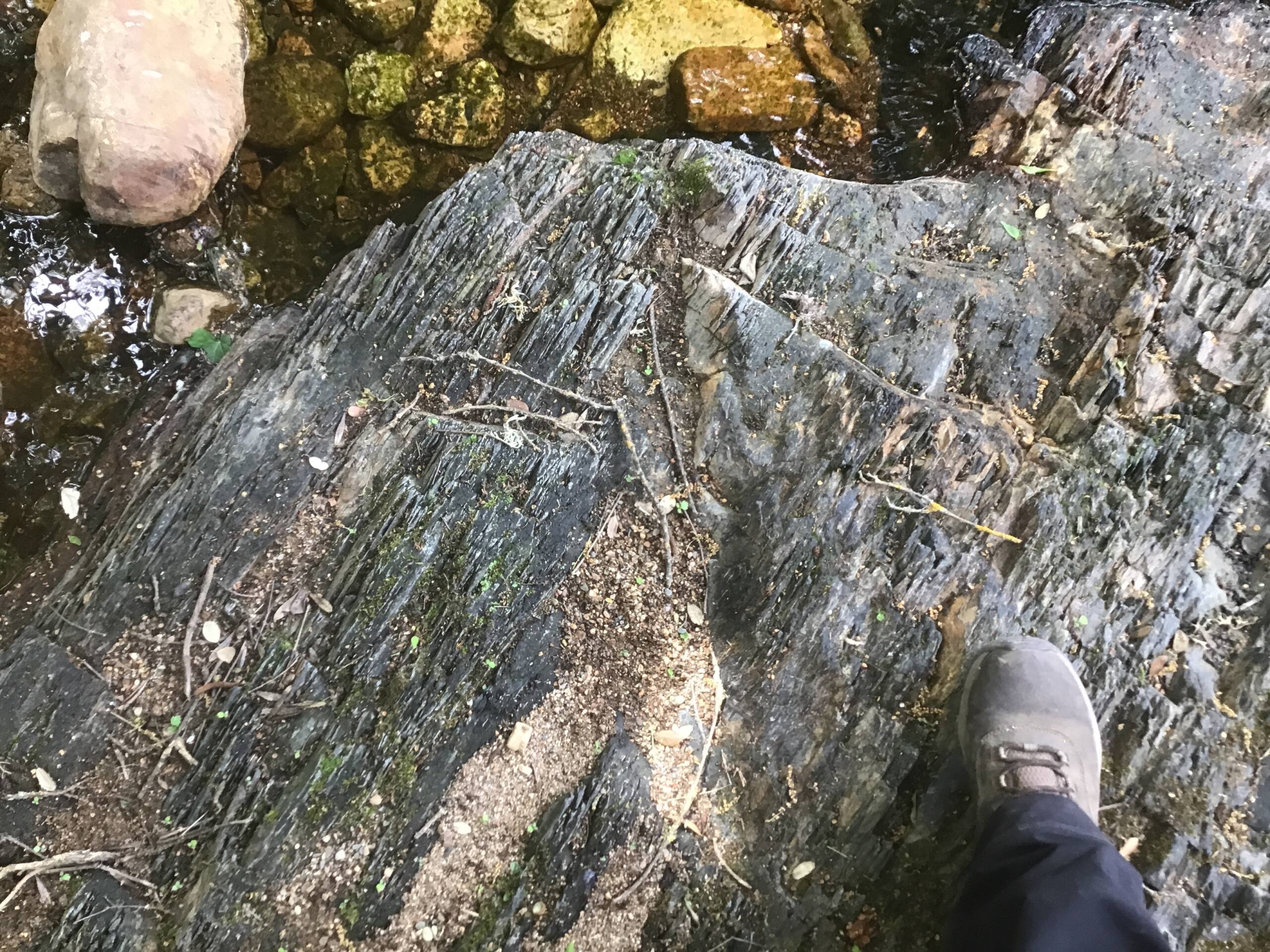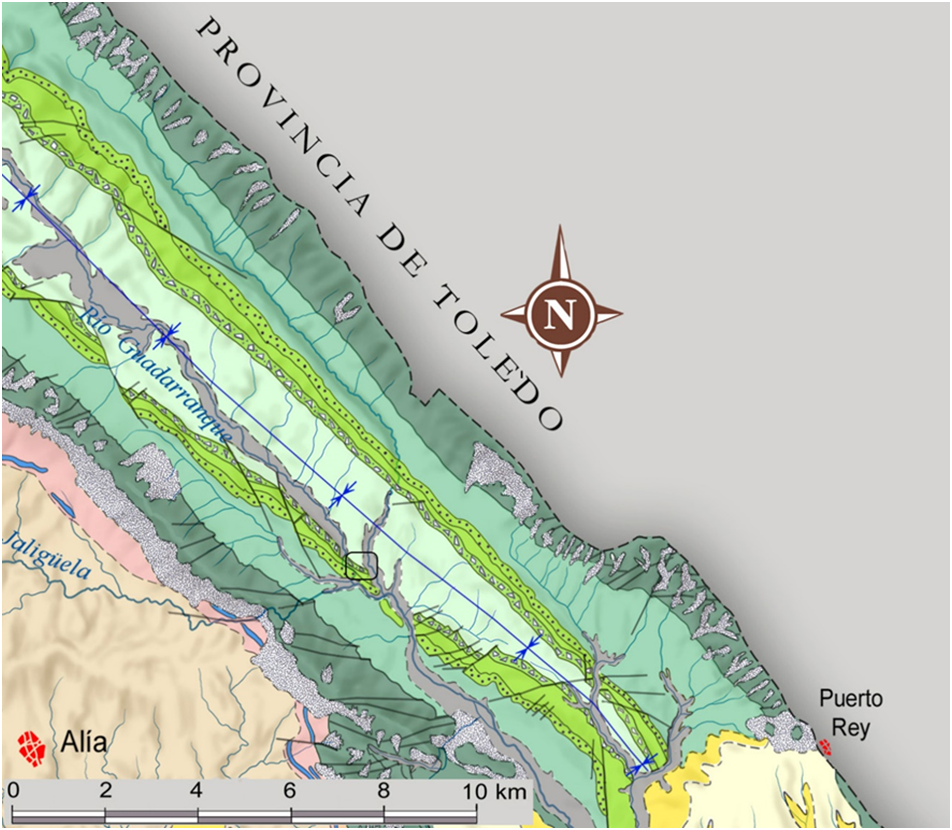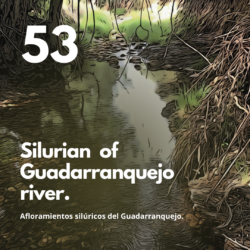LOCATION AND ACCESS
It is located at km 96 on the EX102 road, following the course of the Guadarranquejo stream. It can be accessed by all types of vehicles and the road is very accessible, with ample parking for both cars and buses.
Geoparque Mundial UNESCO
Geoparque Villuercas > Nº53 – Silurian outcrops of Guadarranquejo river
It is located at km 96 on the EX102 road, following the course of the Guadarranquejo stream. It can be accessed by all types of vehicles and the road is very accessible, with ample parking for both cars and buses.
It is one of the few outcrops where we can observe the shales and ampelitic slates of the Guadarranquejo Formation formally defined in this area. Ampelitic shales have been used for pencils and dyes due to their high content of organic matter, generally transformed into graphite. Their origin could come from the Greek άμπελος “ampelos” (vine) as they have been used as fertiliser for vines, as they contain abundant pyrite, which releases iron sulphate when decomposing.


The geosite is located very close to the confluence of the Guadarranque river and the Guadarranquejo stream and includes the transition between the Ordovician (diamictites of the Gualija Formation) and the base of the Silurian represented by the Guadarranquejo Formation which has been described in this area. This unit includes black ampelitic shales that overlie the glacial diamictites of the Gualija Formation. This Geosite informs us of the important climatic changes that took place during the Ordovician-Silurian transition (see Geosites 28 Cancheras de la Trucha and 47 Gargantes del Endrinal). The disappearance of the south polar ice caps at the beginning of the Silurian caused a significant rise in global sea level. The shallow continental-influenced environments of the Gualija Formation very quickly gave way to distal shelf environments represented by shaly facies with abundant organic matter (ampelitic shales). The fossils of the Guadarranquejo Formation are exclusively planktonic (graptolites and epiplanktonic brachiopods) or nektonic conodonts typical of offshore environments. This geosite also informs us about important biotic changes. Life in the Ordovician experienced a great diversification. However, at the end of the Ordovician, a great glaciation occurred, leading to a great mass extinction. In the biotic aspect, the great Ordovician extinction, caused by the glaciation and which caused the near disappearance of the graptolites, was followed by a great recovery, reaching its maximum diversity during the Silurian.
